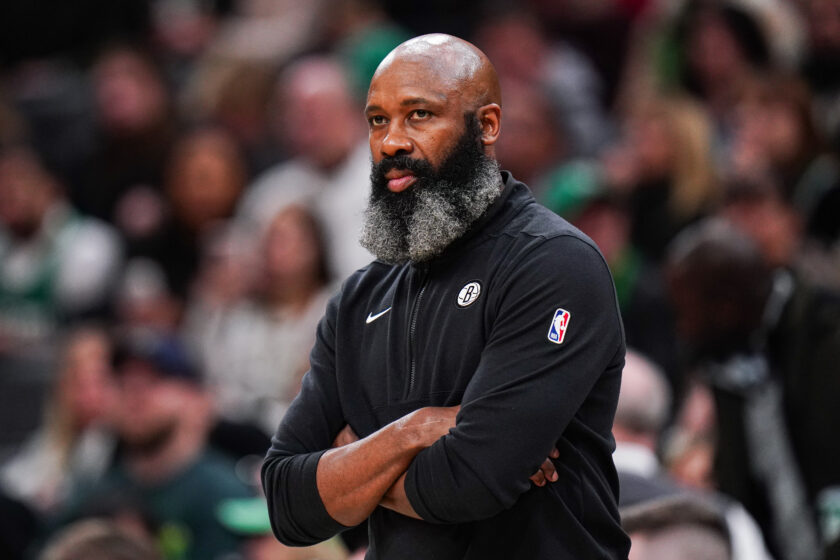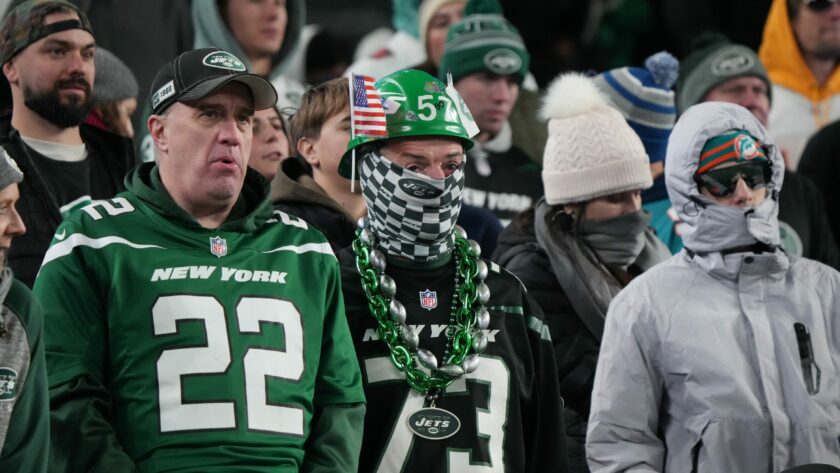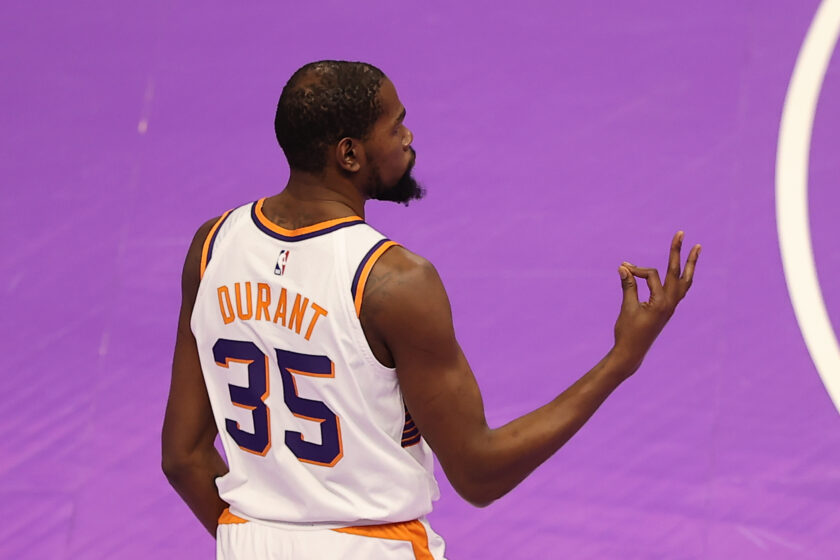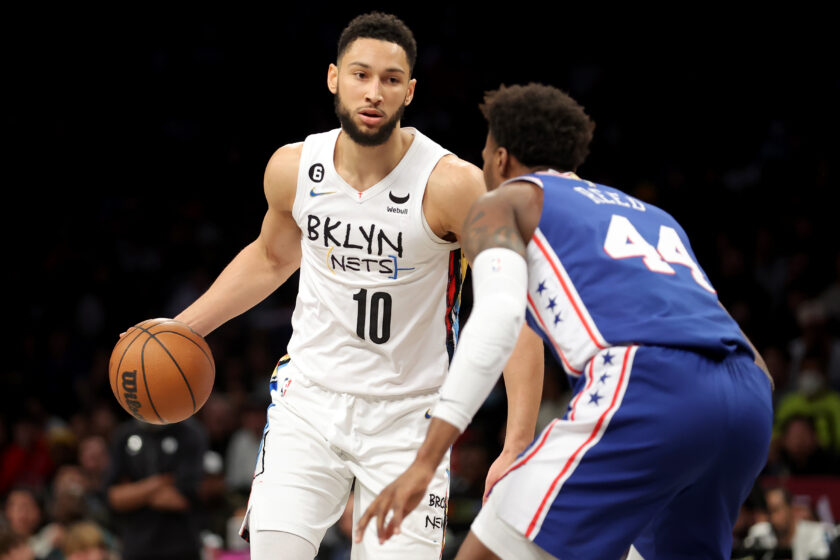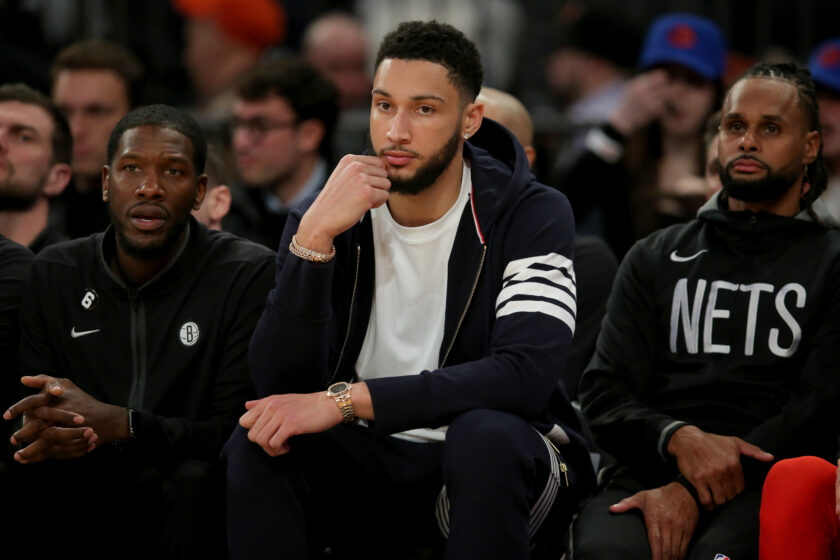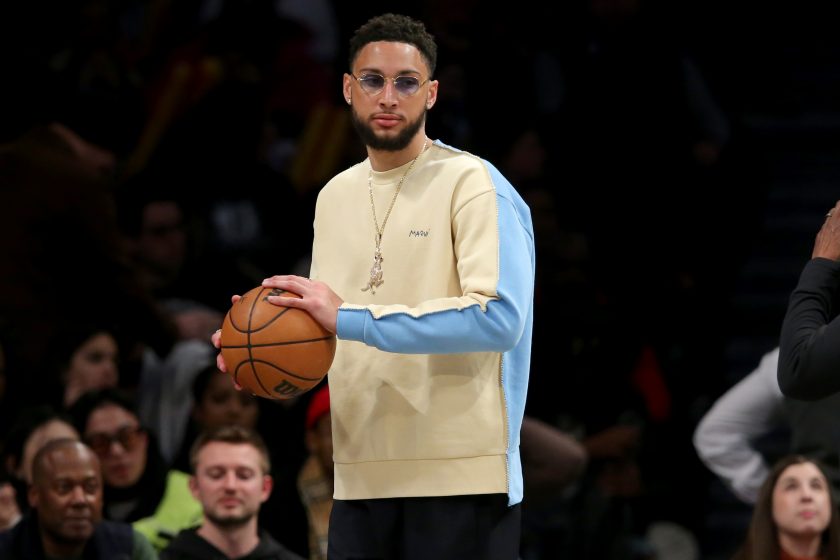Brooklyn Nets: Is Joe Harris having a better season than prime Kyle Korver?
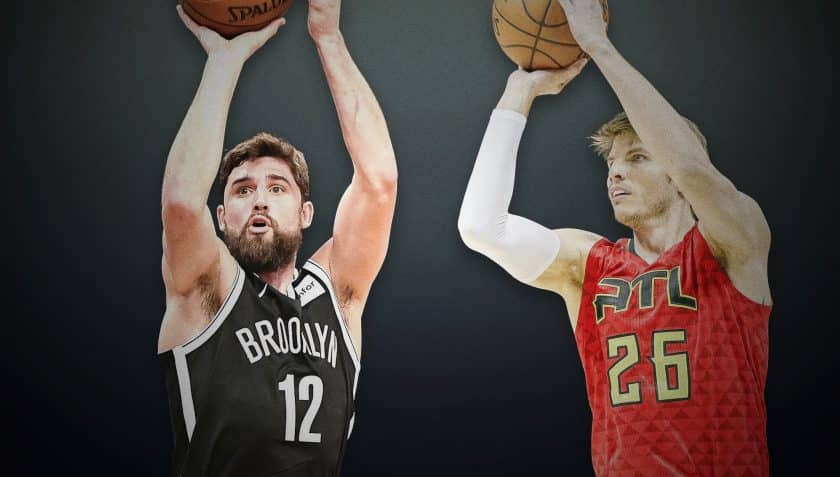
Joe Harris is having a career year this season and has established himself as one of the best shooters in the NBA. How does his impressive 2018-2019 season compare to one of the best shooters of all-time?
[sc name=”Matt Brooks Banner” ]Joe Harris has broken out as a Brooklyn Nets late-bloomer. With a quick-twitch stroke, an endless motor, and the uncanny ability to find an inch of space, Harris is the ideal modern-day spot-up shooter.
Harris has been so impressive this season that it’s reasonable to wonder if he’s an early-stage all-time great shooter. Stylistically, he’s heavily reminiscent of a fellow second-round pick.
Over the last five years, Kyle Korver has widely been recognized as the NBA’s best (non-superstar) sweet-shooter.
Korver’s career is an interesting one to look at. During his first four seasons, the one-time small forward was a steady rotation player for the Philadelphia 76ers. In years two and three, Korver started 100 of his total 164 games played.
His prime is where things start to get funky. From ages 26-to-31, Korver played on four different teams. At age 28, you’d expect Korver to set career-highs just based on the trajectories of other NBA players. However, this was the season where Korver played a then-career-low 18.3 minutes per game.
The euphemism “aging like fine wine” is an overused saying, but there’s frankly no other way to describe Kyle Korver. From ages 31-to-34, Korver experience a breakout while playing for the Atlanta Hawks. He started an impressive 296 of his 300 total games played and was an essential piece for a perennial playoff team.
His peak occurred during the 2014-2015 season. While Korver was never much of a volume scorer (he averaged 12.1 points per game in 2015), he was disgustingly efficient.
In that season, Korver canned an insane 49.2 percent of his 6 attempted threes per game. He was, in many ways, the engine to the motion-heavy 60-win Atlanta Hawks offense; just by nature of the spacing that he provided on the court. Korver was so good that he was selected onto 2015 NBA All-Star team (alongside three of his Atlanta teammates).
Joe Harris has played a similarly important role for a playoff team in Brooklyn. He’s helped elevate the Nets from bottom-feeder to sixth-place in the Eastern Conference. In fact, you could argue that outside of All-Star point guard D’Angelo Russell, Joe Harris is the most important player on Brooklyn’s roster.
Interestingly enough, much of Harris’ game has been fashioned to mimic Kyle Korver. In a recent podcast with ESPN’s Zach Lowe, Harris commented on Korver’s influence:
When talking about changing his game, Harris stated that “It started with, you know, watching Clips of Korver Moving without the ball, how he was able to find space because Kenny [Atkinson] is bringing, you know, a similar offense to what they did in atlanta… seeing where he was able to kind of find space, get shots from and then it… progressed from there.”
Harris is enjoying career-highs across the board. Seriously. In every freaking category. Take a look for yourself:
With a bigger role on offense, Harris has shown just how far he can take a competent roster. Similar to Korver, the threat of his cutting and off-ball movement has breathed new life into the Barclays Center. Opposing defenses assign a defender to stay glued to the hip of Harris. This gives his teammates more room to operate.
This season has undoubtedly represented as a passing-of-the-torch year for Korver. He’s experiencing a career-low in minutes for the playoff-bound Utah Jazz. At 37 years old, there just isn’t much left in the tank for the sharpshooter.
Harris seems poised to overtake the honor of the association’s best off-ball shooter. He’s currently leading the NBA in three-point percentage and just recently took down the greatest shooter of all time, Stephen Curry, in a three-point shooting contest. Harris’ stock has never been higher.
Looking deeper at the numbers, is Harris’ age 27 season actually better than Korver’s career-year? Is he well on his way to surpassing Korver in the hierarchy of best all-time shooters?
Traditional statistics bear the similarity between the two players. Although Korver had a slightly more efficient season from deep, Harris has been scoring with more frequency. The two players are practically identical in playmaking, with a shared average of 2.6 assists per game.
There’s a lot to unpack with this chart but a few statistics stand out in particular.
Effective field goal percentage is similar to nominal field goal percentage, except that it takes into account that three-point shots are worth more than two-point shots.
Korver’s eFG of 67.1 percent is slightly better than Harris’ 63 percent. Harris actually has a better traditional field percentage (50.6 versus Korver’s 48.7 percent), so it goes to show you just how lethal prime-Kyle Korver was from deep.
As mentioned before, Korver shot just south of 50 percent from deep five seasons ago. Harris, on the other hand, is shooting a (still ridiculous) 47.8 percent from three. What makes Korver’s high percentage even more impressive is that he attempted nearly one more three per game than Harris.
2014-2015 Kyle Korver displayed the highest degree of veteran stability: he knew what he was good at. As an off-ball threat with a tremendous motor, Korver spent a majority of the season brushing around screens and hustling hard in transition to get open from deep.
A majority of Korver’s makes came as assisted baskets. Korver was, by far, the team leader in catch-and-shoot makes; he averaged 8.6 catch-and-shoot points per game on 50.6 percent from deep. Harris, on the other hand, isn’t even Brooklyn’s leader in points off the catch-and-shoot. That honor belongs to Allen Crabbe. Harris is Brooklyn’s most efficient scorer from the catch-and-shoot, scorching 47.9 percent of his 4.2 attempted threes per game.
Korver’s bread and butter was a result of timely cuts towards the middle of the court from the wing. Notice how he frantically sprints around the arc before stopping, planting his feet, and popping for three:

This is the part of Korver’s game where Harris has undoubtedly taken the most influence. Sprinting from the corners to above the break has done wonders for both players. This type of motion is where a heavy majority of their three-point shots come from.
In 2014-2015, Kyle Korver sank 47.8 percent of his 335 above the break threes. That almost seems impossible, but the numbers bear the truth. This season, Harris has been similarly knockdown, hitting 46.2 percent of his above the break shots.
Glancing at NBA.com’s tracking statistics (a personal favorite of mine), you’ll see just how much Harris resembles prime-Kyle Korver in his movements.
Harris is Brooklyn’s team leader in all statistics related to distance covered per game. He runs an average of 2.44 miles per contest at a speed of 4.55 miles an hour. Korver was also Atlanta’s team leader in these categories, traveling 2.35 miles per game at an equally impressive speed (4.39 miles per hour).
Basically, these guys hauled ass for all 30 minutes of playing time. By purposely running around the halfcourt to find space, Harris and Korver created ample opportunities to elevate for catch-and-shoot baskets. Hustling makes them arguably the most important offensive players to their respective teams.
Both Korver and Harris are read and react players in that receive the ball and don’t hold it for long. Being a quick decision-maker keeps the defense on its toes, and it helps make up for the fact that neither of them are great athletes. While Harris receives a few more touches per game (46.1) than Korver (39), the two players are basically identical when it comes to average hold time. Harris holds onto the ball for an average of 1.83 seconds, while Korver held onto the rock for an even more minuscule average of 1.52 seconds.
I’m sure you’re thinking: wow, that was … a lot of information. Bear with me. Let’s circle back and take a glance at their two-point numbers.
Joe Harris’ two-point attempts are twice that of prime-Kyle Korver. Not only does he take these shots with more volume than the former Cavalier, but he’s also more efficient from this range. Harris has recorded a strong 53.6 percent from two-point land versus Korver’s 47 percent.
These averages only tell half the story. Looking at the two players shooting statistics (courtesy of NBA.com), Harris has taken 180 total shots from the restricted area this season and 70 non-restricted painted area attempts. Korver, on the other hand, recorded only 30 restricted area shots and 13 shots from the non-restricted painted area.
What makes Harris five times better than Korver at scoring near the basket?
Kenny Atkinson runs a futuristic offensive system that is heavily influenced by the Houston Rockets. For Brooklyn, the goal is to attempt only three-pointers and at-rim shots.
[sc name=”Nets Center” ]Harris has bought into this system, trading in more inefficient midrange shots for restricted area baskets. In 2014-2015, Kyle Korver attempted 108 midrange shots and made a solid 46.3 percent of them. Harris’ midrange total from this season pales in comparison; he’s attempted only 24 total midrange jump shots.
More importantly, he’s made only 37.5 percent of them; this is Harris’ lowest efficiency from any part of the court.
Recognizing that he’s not much of a midrange artist, Harris has turned his attention towards pressuring the basket. And boy is he good at it.
With a burly 218 pound frame and excellent defensive awareness, Harris is great at timely drives into the paint. He’s a surprisingly good ballhandler – a trait that is rarely seen in spot-up artists – and Harris uses this to slice through defenders.
Harris’ best trait is that isn’t afraid of contact. He uses a creative palette of at-rim finishes to score against opposing bigs. Whether this is up-and-unders or off-hand layups, Harris always has a counter for the incoming big that is likely salivating at the opportunity to swat Harris’ shot.
Joe Harris shockingly ranks fourth on Brooklyn’s list of scorers off the drive. He’s producing 3.9 points per contest on a nifty 50.3 percent from the field.
His drives tend to come at particularly clutch moments. At many times, he drives the ball late in the shot clock to bail out sluggish Nets’ possessions. On Saturday, Harris uncorked a particularly tenacious pair drives to stop a 38-6 Charlotte Hornets run.

Seriously, how many spot-up shooters would barrel to the rim this fearlessly? I tell ya, Joe Harris is a rare bread.
Korver, on the other hand, was more resemblant of your typical spot-up star. He rarely attacked the basket, producing only 0.9 points off of drives in 2014-2015. When he did choose to attack, he wasn’t particularly efficient, making a mere 31 percent of his attempts.
Being effective as a drive and kick player has given Harris more space to operate. Defenses can’t simply run him off the three-point line. If a defender closes out too close to Harris, the 27-year-old can blow by the opponent and weave his way into traffic for an athletic finish. On the flip side, his threat of the drive allows him to pull-up in defenders’ faces for uncontested threes with more frequency.
When Harris puts the ball on the floor, it’s by far the most fun wrinkle of his game.
Let’s a little deeper and dip our feet into the advanced numbers.
If we were to put the 2014-2015 Atlanta Hawks into a time machine to play against the current Brooklyn Nets, on/off numbers suggest that the two teams would perform similarly on offense with Korver and Harris in the game. (Brooklyn has an offensive rating of 110.3 with Harris on the court; Atlanta’s offensive rating was 110.8 with Korver on the floor).
With Harris off the floor, that number falls to 103.2. With Korver off the floor, Atlanta’s rating plummeted to 95.7. From the 2015 season, that’s comparable to the difference between the 67-win Warriors efficiency on offense and the 18-win New York Knicks.
That is one hell of a drop-off. To be fair, Atlanta didn’t have a ton off shooting off their bench – a possible explanation for the discrepancy. Their best reserve at shooting was Kent Bazemore, who finished with a slightly above-average 36.4 percent from three.
Brooklyn, on the other hand, has multiple snipers off its bench to pick up the slack for Harris. Shabazz Napier is an expert off the dribble. Allen Crabbe, a career 39.6 percent three-point shooter, is almost overqualified as Harris’ understudy.
Still, let’s not take away from Kyle Korver’s skillfulness. He was Coach Mike Budenholzer’s offensive system.
Kyle Korver was always overlooked as a defender. In today’s day and age, he’s a bit of a turnstile. But at the time, Korver was an excellent positional defender. He has superb length (6-foot-7) for his position and became better at moving his feet as his career progressed. He stayed in front of his opponents surprisingly well. Korver didn’t use his motor to just run around screens; he also chased defenders around the perimeter to deter their shots.
Korver had experience with every off-ball set in the book on the offensive side of the ball. With this first-hand knowledge of what teams like to run, it made it easier for Korver to sniff things out on defense.
Atlanta’s defensive lineups with Korver had a 98.5 defensive rating. Without him, that rating dipped to 100.7 (still super impressive, by the way).
Joe Harris isn’t as supported by the analytics on defense. The Nets allow 6 more points per 100 possessions with Harris on the floor; that’s the difference between a top-3 defense and one that hovers around the low-20’s.
To Joe’s credit, he doesn’t play with any particularly adept defenders in Brooklyn’s starting lineup (outside of Jarrett Allen). In fact, a majority of Brooklyn’s plus defenders are found within its bench unit.
Korver enjoyed the bounty of playing with the league’s best defensive frontcourt. Al Horford is still a monster on defense, and Paul Millsap was in pole position to win Defensive Player of the Year at that time. To Korver’s credit, his backcourt partner at the time, Jeff Teague, has always been a porous defender (and was a worse defender than D’Angelo Russell). So he earns major points in that regard.
Korver’s win-shares are higher. Up to this point, he has recorded a better VORP than Joe Harris (value above replacement player).
Not to mention, Korver’s on/off Net Rating is astounding (Atlanta was +12.5 w/ Korver; -5.1 w/o Korver). Brooklyn, on the other hand, is able to keep the ship afloat with Beef Jerky Joe out of the picture (+0.1 w/ Harris; -0.9 w/o Harris).
so, where do we stand on the prime-Kyle Korver and Joe Jesus debate? There’s so much to sift through when comparing the two, but based on shooting numbers and advanced metrics alone, it appears that Kyle Korver was more valuable. (At least to the 2014-2015 Atlanta Hawks).
Although it was only by a couple of percentage points, Korver posted better-shooting numbers on higher volume than Harris. The only other plus shooter on Atlanta’s roster was DeMarre Carroll, so it’s not like he was given a ton of room to operate. In all honesty, that makes his numbers even more impressive.
Not to mention, Korver was a stronger defender by circumstance of having a body that’s a better fit to guarding NBA players.
This evaluation could change come playoff time. Playoff performances matter the most. Defenses tighten up, and the best players are the ones who can perceive when the pressure is on.
For as great as Korver was in the regular season, his impact was greatly minimized in the 2015 NBA playoffs. His three-point percentage dropped all the way to a league-average 35.5 percent, and he came across as somewhat one-dimensional. As seen before, most of Korver’s buckets came via catch-and-shoot threes or midrange shots. If an opposing defense was able to keep a defender connected to Korver’s hip, the 33-year-old was a net-zero in playoff games. The Cleveland Cavaliers certainly displayed this en route to their humiliating 4-game sweep of the Atlanta Hawks.
This is where Joe Harris could separate himself by a considerable margin. There’s a good chance that the 27-year-old is Brooklyn’s best player in the playoffs. Unlike Korver, he has more to his game than just shooting threes. His fearless ability to take guys off the dribble will make him a tough cover for any opposing team; whether this is Indiana, Boston, Philadelphia, etc.
Harris’ downhill game will be immeasurably important to Brooklyn’s success.
One last thing: keep in mind that Korver’s best season came during his twelfth year in the league. By that point, he had worked through all of the kinks in his game and had reached his full peak.
Harris is just getting started. 2018-2019 represents the first season that the former Virginia hooper received starting minutes. It’s also just his fifth year in the league. Harris has seen his three-point percentage jump from 38.5 percent in his first year in Brooklyn, to 41.9 percent in his second, to 47.7 percent this season.
It’s not inconceivable that he continues to improve. Players like J.J. Reddick and Kyle Korver took years to fully find their footing.
Harris is already ahead of the curve. He’s one of the best players on a playoff team and is also the NBA’s best three-point shooter.
Don’t be surprised if the deadeye marksman makes a big imprint on the 2019 NBA playoffs as well.
[sc name=”Nets Link Next” link=”https://elitesportsny.com/2019/02/28/brooklyn-nets-news-spencer-dinwiddie-returning-vs-charlotte-hornets-report/” text=”Spencer Dinwiddie Is Set To Make His Return” ]An NBA fanatic who specializes in the advanced analytics of the game. I cover the Brooklyn Nets here in the city. Follow me on Twitter for semi-witty basketball tweets. @MattBrooksNBA

